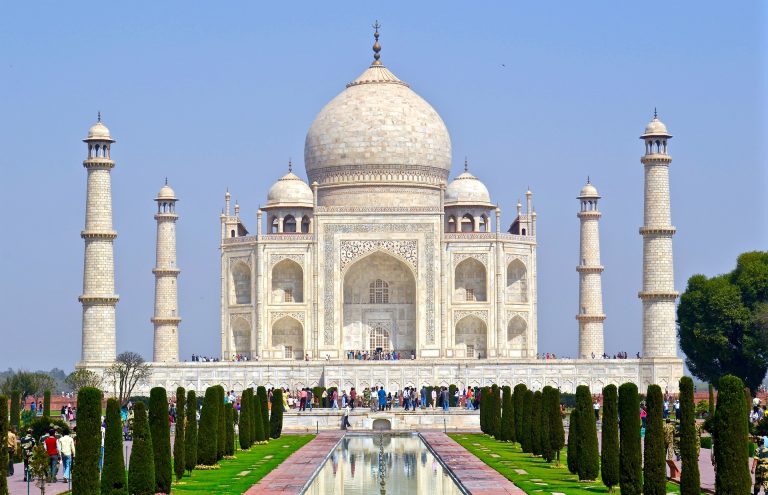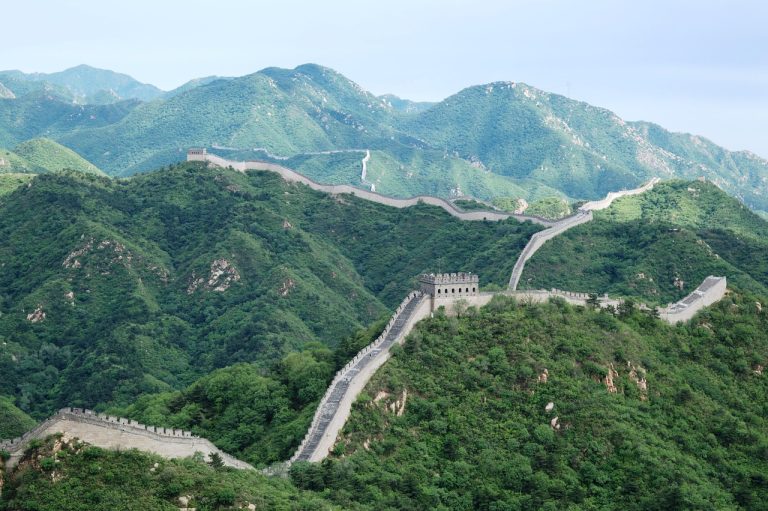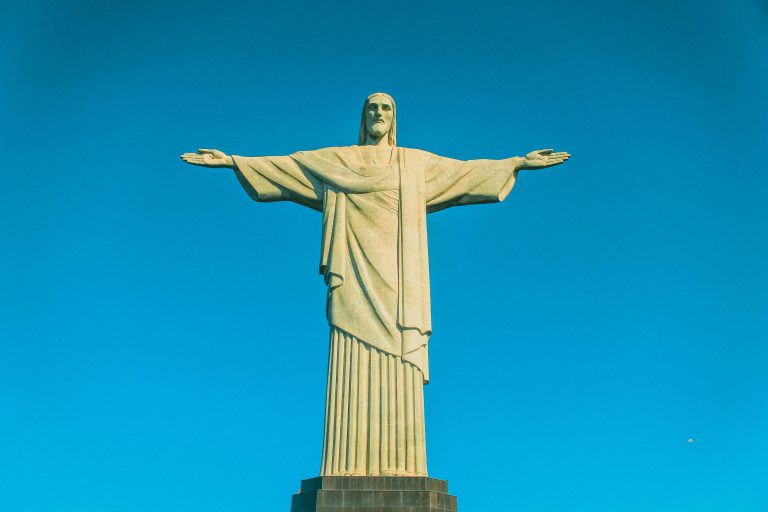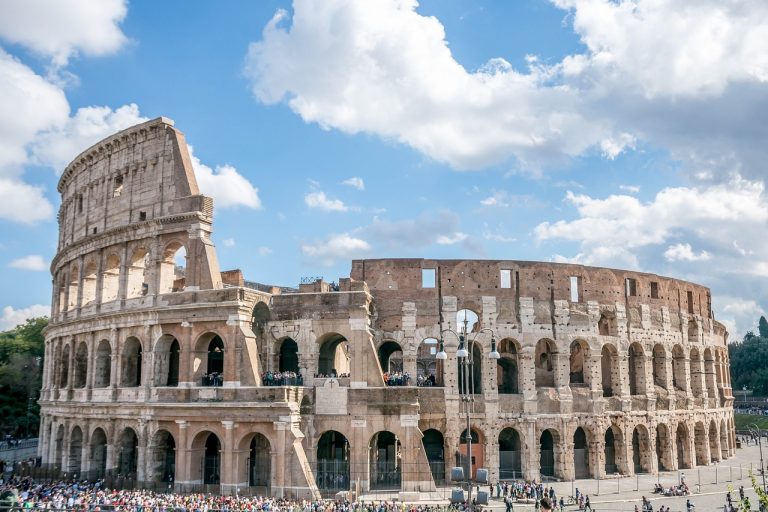A Fascinating Exploration Of The 7 Wonders Of The World!
In our previous blog post on the topic of the environment, we discussed three wonders of the world. In this new blog post, we plan to continue our exploration and cover the remaining four wonders of the world. We believe that this blog post will be an interesting and informative read for our audience.
The Taj Mahal, India

The Taj Mahal is an absolute marvel of architecture and one of the most iconic landmarks in the world. It was built by the Mughal emperor Shah Jahan as a mausoleum for his beloved wife, Mumtaz Mahal. Construction began in 1632 and took around 20 years to complete. The Taj Mahal is located in Agra, India, and is made entirely of white marble. It features intricate carvings, calligraphy, and inlaid precious stones, making it a true masterpiece. The main dome is surrounded by four smaller domes and is flanked by minarets on each corner. Inside the Taj Mahal, you’ll find the tombs of Shah Jahan and Mumtaz Mahal. The beautiful gardens surrounding the mausoleum add to its serene and picturesque setting. The Taj Mahal is not only a symbol of love but also a testament to the skill and craftsmanship of the Mughal era. It attracts millions of visitors from around the world every year.
History
The Taj Mahal is located on the right bank of the Yamuna River in Agra, Uttar Pradesh, India. Taj Mahal was commissioned in 1631 by the fifth Mughal emperor, Shah Jahan, as a tribute to his beloved wife, Mumtaz Mahal. The mausoleum also houses the tomb of Shah Jahan himself. The Taj Mahal stands at the center of a 17-hectare (42-acre) complex, which includes a mosque and a guest house. The entire complex is surrounded by a crenellated wall. Although the construction of the mausoleum was essentially completed in 1643, but other phases of the project continued for another decade. The first ceremony held at the Taj Mahal was an observance by Shah Jahan on February 6, 1643, marking the 12th anniversary of Mumtaz Mahal’s death. The mausoleum was opened to thousands of mourners at that time.
The construction project employed around 20,000 artisans, guided by a board of architects led by the emperor’s court architect Ustad Ahmed Lahauri. The Taj Mahal reflects natural beauty and divinity through various types of symbolism. It is considered one of the best examples of Mughal architecture and a symbol of India’s rich and glorious history. In 1983, the Taj Mahal was designated as a UNESCO World Heritage Site for being the jewel of Islamic art in India and one of the universally admired masterpieces of the world’s heritage.
The Great Wall of China

The Great Wall of China is an incredible architectural marvel. It’s a series of fortifications that stretches across northern China, It was built to protect China from invasions and raids. The Great Wall of China is made up of various sections, some of which are better preserved than others. The most famous section is the one near Beijing, called Badaling. It’s a popular tourist destination and offers stunning views of the wall snaking across the mountainous landscape.The wall is made of stone, brick, and other materials, and it varies in height and width along its length. It’s an impressive feat of engineering, considering the time and resources it took to construct. Today, the Great Wall of China is not only a symbol of China’s rich history but also a UNESCO World Heritage site. It attracts millions of visitors each year who come to marvel at its grandeur and learn about its historical significance. If you ever get the chance to visit, I’m sure you’ll be amazed by the sheer scale and beauty of the Great Wall of China.
History
The Great Wall of China is an ancient series of walls and fortifications located in northern China. It spans more than 13,000 miles and is perhaps the most recognizable symbol of China’s long and vivid history. Emperor Qin Shi Huang conceived the idea of the Great Wall in the third century B.C. as a defense against barbarian nomads. Although it never effectively prevented invaders, the wall became a powerful symbol of Chinese civilization’s enduring strength. Construction began around 220 B.C. during the Qin Dynasty, and it continued through subsequent dynasties. The best-known and best-preserved section was built during the Ming dynasty (14th to 17th century AD). The wall was made mostly of earth and stone, extending 3,000 miles west from the port of Shanhaiguan on the China Sea to Gansu province. Guard towers were distributed along its length, and it stood as a testament to China’s resilience and cultural heritage. Despite its historical significance, the Great Wall never fully prevented invasions, but it remains an awe-inspiring testament to human engineering and determination.
Christ The Redeemer, Brazil

Christ The Redeemer is an iconic statue located in Rio de Janeiro, Brazil. It’s a massive statue of Jesus Christ with his arms outstretched, symbolizing peace and embracing the city. The statue stands at the top of the Corcovado mountain, overlooking the vibrant city of Rio. Its construction began in 1926 and was completed five years later in 1931. and has since become one of the most famous landmarks in the world. Christ the Redeemer is made of reinforced concrete and covered in soapstone. It stands at a height of 98 feet (30 meters) and has a wingspan of 92 feet (28 meters). The statue is not only a religious symbol but also a symbol of Brazilian culture and hospitality. Visiting Christ the Redeemer offers breathtaking panoramic views of Rio de Janeiro, including the beautiful beaches and lush mountains. It’s a must-visit attraction for tourists from around the globe.
History
The Christ the Redeemer statue, located atop Mount Corcovado in Rio de Janeiro, Brazil, is a colossal monument of Jesus Christ. Designed by Brazilian engineer Heitor da Silva Costa and sculpted by Frenchman Paul Landowski, it was completed in 1931. The statue stands 98 feet (30 meters) tall, with horizontally outstretched arms spanning 92 feet (28 meters). Made of reinforced concrete and clad in a mosaic of thousands of triangular soapstone tiles, it sits on a square stone pedestal base about 26 feet (8 meters) high. The Christ the Redeemer statue is emblematic of both Rio de Janeiro and the entire nation of Brazil, symbolizing faith, resilience, and cultural heritage.
The Colosseum, Rome, Italy

The Colosseum in Rome, Italy, is an incredible ancient amphitheater that dates back to the Roman Empire. It’s one of the most iconic landmarks in the world and a symbol of Rome’s rich history. The Colosseum was completed in 80 AD and could hold up to 50,000 spectators. It was primarily used for gladiatorial contests, animal hunts, and other public spectacles. The architecture of the Colosseum is awe-inspiring, with its massive stone walls and intricate design. Today, the Colosseum is a popular tourist attraction, and visitors can explore its various levels and learn about the fascinating history of the Roman Empire. It’s truly a remarkable sight to behold and offers a glimpse into the grandeur of ancient Rome. If you ever get the chance to visit Rome, make sure to check out the Colosseum.
History
The Colosseum in Rome is a remarkable ancient structure that was built in the first century by order of the Emperor Vespasian. This impressive amphitheater is a marvel of engineering, measuring 620 by 513 feet (189 by 156 meters) and boasting a complex system of vaults. It was capable of holding up to 50,000 spectators, who enjoyed a variety of events held there. The most notable of these were gladiator fights, but other events such as men battling animals and mock naval engagements also took place. While it is debated whether Christians were martyred in the Colosseum, it is believed that around 500,000 people died in the amphitheater. The sheer number of animals that were captured and killed there also reportedly led to certain species going extinct.

